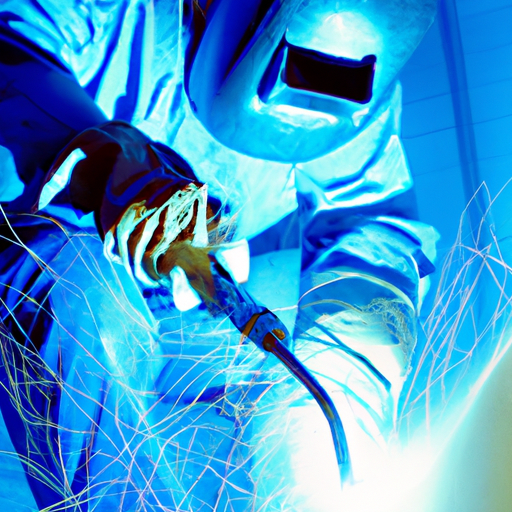Welding is a skilled trade that requires expertise and precision. For those aspiring to become professional welders, passing welding tests is an essential step towards acquiring the necessary certifications. However, not all welding tests are created equal, with some known to be especially challenging. In this article, we will explore the intricacies of welding tests and highlight the hardest one to pass, offering insights into why it presents such a formidable challenge for welders. So, if you’re curious to discover which welding test separates the best from the rest, keep reading!
Understanding the Concept of Welding Test
Why welding tests are important
Welding tests play a crucial role in evaluating a welder’s skills and proficiency in various welding techniques. These tests are conducted to determine an individual’s ability to produce high-quality welds that adhere to industry standards and specifications. By assessing the welder’s performance under realistic conditions, welding tests help ensure the safety and integrity of welded structures in a wide range of industries, including construction, manufacturing, and transportation.
Common skills evaluated in welding tests
Welding tests assess several crucial skills that are essential for a successful welding career. These skills include:
-
Technical Knowledge: Welders must have a solid understanding of welding theory, safety protocols, welding codes, and standards. This knowledge ensures that they can perform welding operations efficiently and accurately.
-
Manual Dexterity: Welding is a highly skilled and intricate process that requires precision and exceptional hand-eye coordination. The ability to manipulate welding tools with finesse is a crucial aspect evaluated in welding tests.
-
Understanding of Welding Procedures: Welders must be able to read and interpret welding symbols, blueprints, and welding procedures. This skill ensures that they can follow instructions accurately and perform welds to the specified requirements.
-
Quality Control Skills: Welders need to be able to inspect and evaluate the quality of their own work. This includes checking the dimensions, alignment, penetration, and overall appearance of the weld.
Standard process of welding tests
The process of conducting a welding test typically follows a standardized procedure to ensure consistency and fairness. Depending on the type of test, welding candidates are provided with the necessary materials, equipment, and workspace. The test administrator outlines the specific requirements and gives a detailed explanation of the test procedure.
During the test, candidates are assessed based on their ability to execute the welding technique accurately, the quality of the completed weld, and adherence to safety protocols. The test is often observed by a certified welding inspector or an experienced welding professional who evaluates the welder’s performance against predetermined criteria. The final assessment is based on visual inspection, destructive testing, and non-destructive testing methods to determine the quality and integrity of the completed weld.
Types of Welding Tests
Introduction to types of welding tests
Welding tests can vary depending on the specific welding technique being assessed. The most common types of welding tests include Metal Inert Gas (MIG) test, Tungsten Inert Gas (TIG) test, Stick welding test, and Flux Cored Arc Welding (FCAW) test.
Metal Inert Gas (MIG) Test
MIG welding tests evaluate a welder’s proficiency in using a MIG welding machine, which employs a consumable wire electrode and an inert gas shield. These tests assess the welder’s ability to maintain steady arc control, control the wire feed speed, and ensure proper gas shielding. MIG welding tests are commonly used in industries that require high productivity and versatility in welding applications.
Tungsten Inert Gas (TIG) Test
TIG welding tests assess a welder’s skill in using a TIG welding machine, which utilizes a non-consumable tungsten electrode and an inert gas shield. TIG welding requires precise control of the heat input and the filler metal. These tests evaluate the welder’s ability to produce high-quality welds with excellent aesthetics, superior penetration, and minimal distortion. TIG welding is widely used in industries that demand exceptional weld quality and sound structural integrity.
Stick Welding Test
Stick welding tests, also known as Shielded Metal Arc Welding (SMAW) tests, evaluate a welder’s aptitude in using a manual stick welding process. These tests focus on the welder’s ability to control the arc length, maintain a consistent welding rhythm, and ensure proper electrode manipulation. Stick welding is commonly used in industries that require welding in challenging conditions, such as construction sites and field repairs.
Flux Cored Arc Welding (FCAW) Test
FCAW welding tests measure a welder’s proficiency in using a FCAW welding machine, which employs a tubular wire electrode with a flux core. These tests assess the welder’s ability to control the wire feed speed, maintain proper gas shielding, and handle welding in different positions. FCAW welding is favored in industries that require high deposition rates and excellent weld quality, such as shipbuilding and structural fabrication.
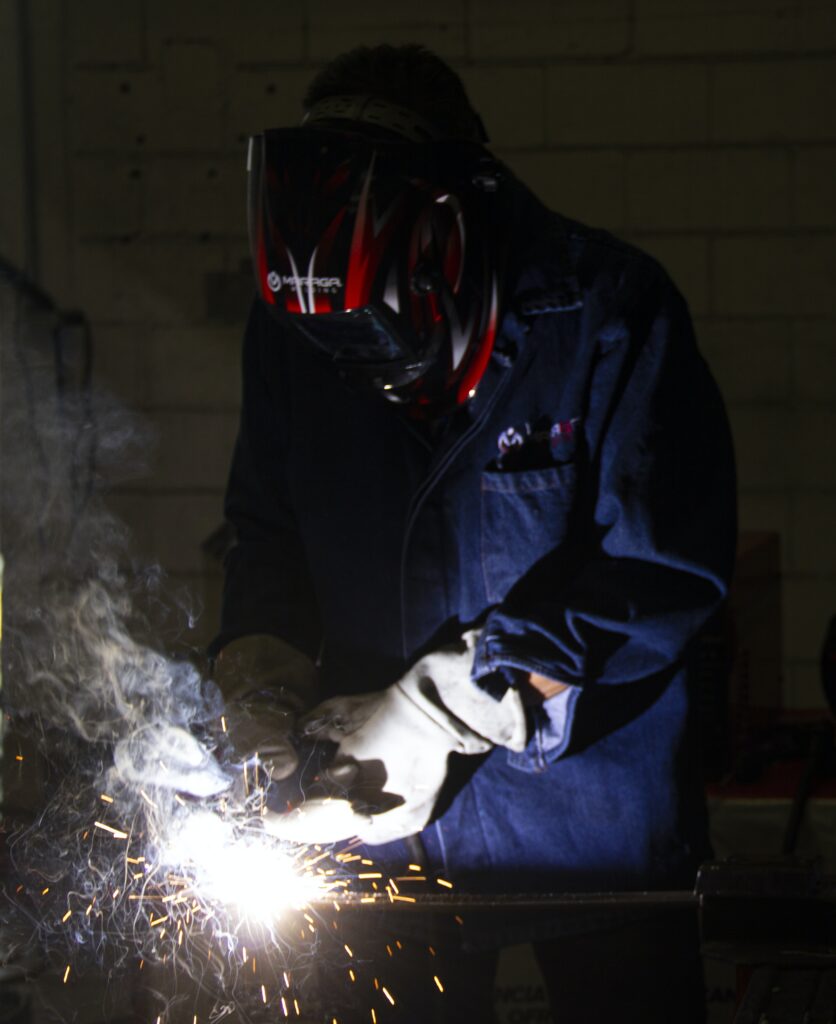
Criteria to Determine Test Difficulty
Parameters used to define difficulty
Determining the difficulty level of a welding test involves considering various parameters. Some of the factors considered to define test difficulty include:
-
Welding Position: The test position in which the welder has to perform the weld significantly impacts the level of difficulty. Different positions, such as flat, horizontal, vertical, and overhead, require specific techniques and present unique challenges.
-
Joint Configuration: The joint configuration, such as butt joint, fillet joint, or groove joint, affects the complexity of the weld. Each joint configuration demands different welding techniques and requires specific skill sets.
-
Metal Thickness: The thickness of the base metal being welded contributes to the difficulty of the test. Welding thin materials requires precise control, while welding thick materials demands more heat input and penetration.
How individual expertise influences difficulty
The level of expertise possessed by an individual welder can greatly influence the perceived difficulty of a welding test. An experienced welder who has honed their skills through years of practice and training may find a particular test less challenging compared to a novice welder. Experience enables welders to develop advanced techniques, troubleshoot issues effectively, and make adjustments on the fly. However, even experienced welders may face difficulties when encountering unique test parameters or unfamiliar materials.
Role of the testing standard or procedure
The testing standard or procedure established by welding organizations, such as the American Welding Society (AWS) or International Organization for Standardization (ISO), plays a crucial role in defining the difficulty level of welding tests. These standards provide specific guidelines, acceptance criteria, and performance qualifications that ensure uniformity and consistency in welder assessment. The standards help maintain a fair evaluation process by setting a benchmark against which all welders are measured.
Overview of 6G Pipe Welding Test
Basics of 6G Pipe Welding Test
The 6G pipe welding test is widely regarded as one of the most challenging welding tests. It evaluates a welder’s ability to perform welds on a pipe joint with the pipe fixed at a 45-degree incline. The test is typically conducted using the Shielded Metal Arc Welding (SMAW) process.
Detailed process of 6G Pipe Welding Test
In the 6G pipe welding test, the welder must complete a full circumference weld around the pipe joint while maintaining the integrity and quality of the weld in all positions. The test involves welding in the vertical, horizontal, and overhead positions, simulating real-world working conditions frequently encountered in pipe welding applications.
The test starts with the welder preparing the pipe joint, ensuring proper fit-up, and aligning the sections to be welded. Once the preparation is complete, the welder begins the welding process, focusing on maintaining proper arc length, electrode manipulation, and control of the molten pool. The welder must demonstrate proficiency in welding techniques suitable for each position, including controlling the sagging of the molten metal in the overhead position.
Upon completion, the weld is subjected to visual inspection, non-destructive testing methods like radiographic testing or ultrasonic testing, and destructive testing methods like bend tests or tension tests. The welder’s performance is evaluated based on the overall quality, soundness, and adherence to the specified criteria.
Why 6G is often considered the hardest
The 6G pipe welding test presents several challenges that make it notoriously difficult. Firstly, welding in multiple positions requires welders to be proficient in various techniques and adjust their body positions accordingly. Transitioning smoothly between the vertical, horizontal, and overhead positions demands exceptional skill and adaptability.
Additionally, the incline of the pipe at a 45-degree angle introduces positional challenges that demand precise control and manipulation of the welding electrode. The inclined position enhances the likelihood of gravity affecting the molten metal, potentially leading to sagging or insufficient penetration.
Moreover, welding pipe joints necessitates careful management of root pass penetration, fusion, and alignment. The presence of the backing ring and proper tie-in of subsequent weld passes require meticulous attention to detail and technique.
Overall, the 6G pipe welding test challenges welders both mentally and physically, pushing them to demonstrate mastery in various welding positions and techniques.
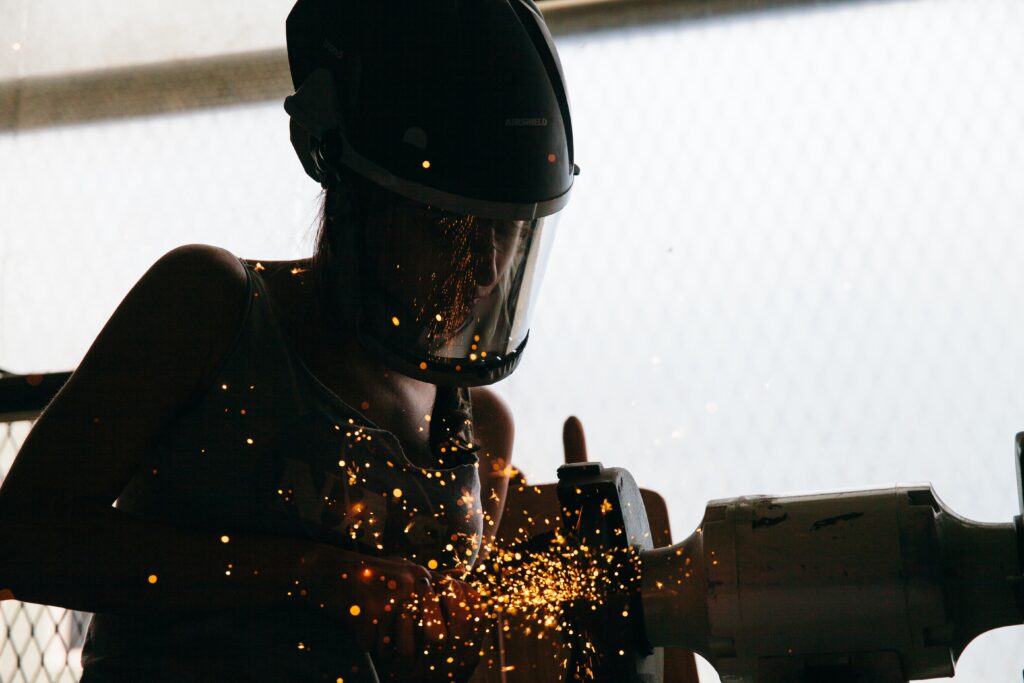
Prerequisites for 6G Pipe Welding Test
Necessary skills for taking 6G test
Taking the 6G pipe welding test requires a broad range of skills to ensure successful completion. Some of the essential skills include:
-
Proficient Arc Control: The ability to maintain the arc length and manipulate voltage and amperage settings to achieve optimal penetration and fusion is crucial.
-
Knowledge of Electrode Manipulation: Mastery of various electrode manipulation techniques, such as drag, weave, and whip, is necessary to control the weld pool and deposit the weld metal properly.
-
Understanding of Joint Preparation: Comprehensive knowledge of joint preparation, including beveling and fit-up, is essential to ensure proper alignment and gap tolerance for a successful weld.
-
Ability to Weld in Multiple Positions: Welders must be comfortable welding in various positions, such as vertical, horizontal, and overhead. The skills to adjust body positioning, electrode angle, and travel speed accordingly are critical.
The equipment used in 6G test
The equipment required for the 6G pipe welding test includes:
-
Welding Machine: A welding machine compatible with the SMAW process is necessary for the 6G test. It should provide sufficient amperage and voltage control to meet the requirements of the specific test.
-
Electrodes: Electrodes suitable for the base metal being welded are essential. Common electrode types used in the 6G test include E6010 and E7018, depending on the specific requirements and industry standards.
-
Welding Helmet and Safety Gear: A welding helmet with the appropriate shade level, along with personal protective equipment (PPE) such as gloves, welding jacket, and safety glasses, is crucial for welder safety.
-
Pipe and Fixtures: The test requires a pipe of the specified dimensions, material, and bevel preparation. Additionally, fixtures or clamps may be used to secure the pipe in the 45-degree incline position during welding.
Safety measures during 6G test
Safety should always be a top priority during welding tests, especially the demanding 6G pipe welding test. Some key safety measures to adhere to during the test include:
-
Proper Ventilation: Adequate ventilation is essential to avoid the inhalation of welding fumes and maintain a safe working environment. Ensure the test area has proper ventilation or use local exhaust ventilation systems.
-
Protective Clothing and Gear: Wear appropriate personal protective equipment (PPE) to safeguard against potential hazards. This includes a welding helmet, gloves, welding jacket, safety glasses, and steel-toed boots.
-
Fire Prevention: Have necessary fire prevention measures in place. Clear any flammable materials from the immediate welding area, have readily available fire extinguishing equipment, and follow best practices for preventing fire hazards.
-
Electrical Safety: Inspect all electrical connections, cables, and welding equipment to ensure safety. Avoid operating the welding machine near water or wet surfaces and carefully handle electrical components to prevent electric shock.
How to Prepare for 6G Pipe Welding Test
Required training for 6G test
Preparing for the 6G pipe welding test requires a combination of theoretical knowledge and hands-on training. Some key steps to prepare for the 6G test include:
-
Formal Welding Education: Consider enrolling in a comprehensive welding training program that covers the fundamentals of welding theory, safety protocols, and practical welding skills. These programs are often offered by technical schools, community colleges, or vocational training centers.
-
Practice and Experience: Acquire as much hands-on experience as possible through practical welding projects and supervised practice sessions. Practice welding in various positions, with a focus on perfecting your techniques and mastering electrode manipulation.
-
Study Welding Codes and Procedures: Familiarize yourself with welding codes and procedures relevant to the 6G test. Understanding the specifications, requirements, and inspection criteria specified by industry standards, such as AWS D1.1 or ASME Section IX, is crucial.
Tips for passing 6G test
Passing the 6G pipe welding test may seem challenging, but with proper preparation and focus, it is achievable. Here are some helpful tips for success:
-
Practice Welding in Different Positions: Dedicate ample time to practice welding in various positions, focusing on maintaining consistent arc control, proper electrode manipulation, and adjusting body positioning for optimal weld quality.
-
Master Electrode Manipulation Techniques: Develop proficiency in different electrode manipulation techniques, such as drag, weave, and whip. Each method plays a vital role in controlling the weld pool in different positions and achieving the desired results.
-
Pay Attention to Joint Preparation: Emphasize proper joint preparation, including precise beveling, fit-up, and alignment. Take care to ensure the appropriate gap tolerance and that the joint is ready to accept the weld metal.
-
Seek Guidance and Feedback: Work with experienced welders or instructors who can provide guidance, feedback, and constructive criticism during practice sessions. Their expertise and insights can help refine your skills and address any weaknesses.
Recommended practice regimen for 6G test
To prepare effectively for the 6G pipe welding test, consider following a structured practice regimen. Here is a recommended framework:
-
Technical Knowledge: Start by studying welding theory, including welding processes, electrode types, joint configurations, and welding codes. Understand the specific requirements and acceptance criteria outlined by the testing standard.
-
Welding Technique Practice: Dedicate time to practice welding in multiple positions, focusing on maintaining consistent arc control, electrode manipulation, and body positioning. Progress from flat and horizontal positions to vertical and overhead positions as your skills improve.
-
Joint Preparation and Fit-Up Practice: Hone your skills in joint preparation, ensuring precise beveling, fit-up, and alignment of the pipe sections. Regularly practice assembling and aligning pipe joints with varying bevel angles to build confidence and accuracy.
-
Mock Test Simulations: Conduct mock tests under realistic conditions to simulate the pressure and performance expectations of the actual 6G test. Time and evaluate your performance, seeking feedback from experienced welders or instructors.
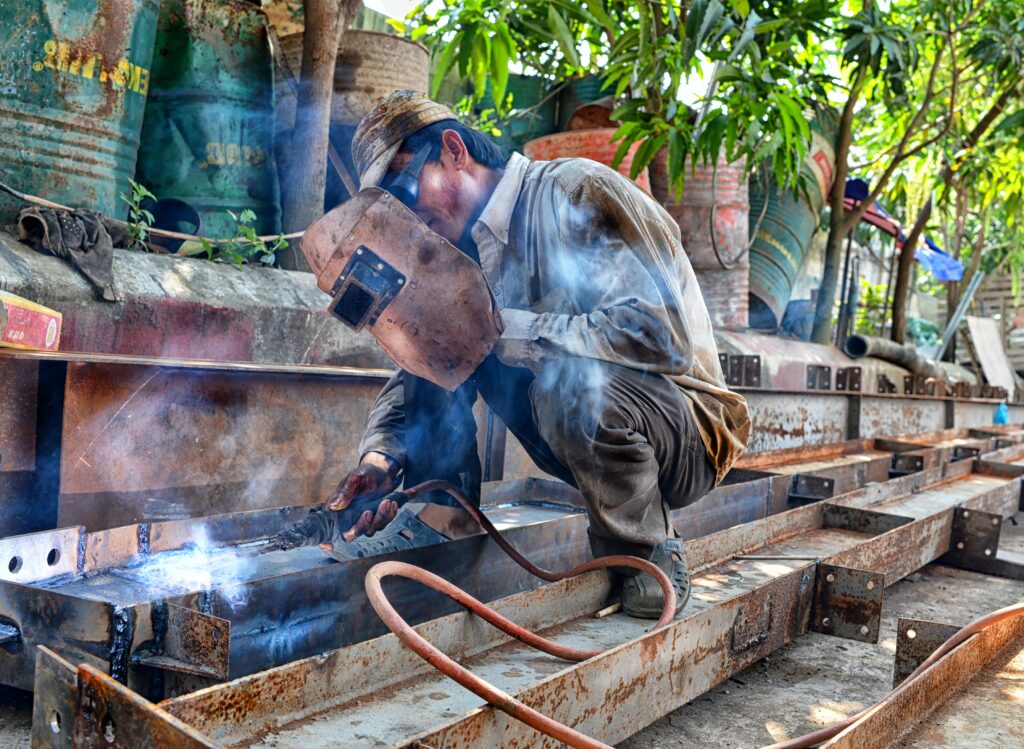
Challenges of 6G Pipe Welding Test
Major difficulties faced during the 6G test
The 6G pipe welding test presents several significant challenges that welders commonly encounter. Some of the difficulties faced during the test include:
-
Positional Challenges: Welding in multiple positions, including the vertical, horizontal, and overhead orientations, requires adaptability, control, and technique mastery. Adjusting welding techniques and body positioning accordingly can be demanding.
-
Incline and Gravity Effects: The 45-degree incline of the pipe introduces challenges related to molten metal sagging and insufficient penetration due to gravity’s influence. Managing the welding parameters to counteract these effects can be challenging.
-
Tight Spaces and Limited Visibility: Welding pipes often involves restricted spaces and limited visibility, adding complexity to the welding process. Maneuvering the welding electrode in confined areas while maintaining proper bead alignment requires precision and spatial awareness.
How to overcome challenges in 6G test
While the 6G pipe welding test poses challenges, proper preparation and a focused approach can help overcome them. Here are some strategies to tackle the difficulties:
-
Practice, Practice, Practice: Dedicate significant time to practice welding in various positions, particularly the ones you find challenging. The more you practice, the more familiar and confident you become in adjusting techniques and body positions accordingly.
-
Focus on Technique Refinement: Pay attention to the specific techniques required for each position and work on refining your skills in electrode manipulation, arc control, and maintaining consistent weld pool characteristics. Practice with different electrode angles and travel speeds to find the optimal parameters.
-
Develop Spatial Awareness and Adaptability: Practice welding in tight spaces with limited visibility to enhance your ability to work in challenging environments. Utilize mirrors, strategically positioned lighting, or specialized welding equipment to improve visibility and spatial awareness.
-
Seek Professional Guidance: Consult experienced welders or instructors who have previously passed the 6G test. They can provide valuable tips, demonstrate proper techniques, and offer guidance on overcoming specific challenges you may encounter.
Reasons for failure in 6G test
Several factors can contribute to failure in the 6G pipe welding test. Some common reasons for failure include:
-
Lack of Preparation – Insufficient practice, inadequate theoretical knowledge, or limited understanding of the specific test requirements can lead to failure in the 6G test.
-
Poor Technique Execution – Inaccurate electrode manipulation, inconsistent arc control, or improper weld bead alignment can result in weld defects and subsequent test failure.
-
Inadequate Adaptability – Welders who struggle to adapt to various positions, overcome positional challenges, or manage inclined welding conditions may face difficulties passing the 6G test.
Impact of Technology on Welding Tests
Changes in welding tests due to technological advancement
Technological advancements have significantly influenced the way welding tests are conducted and evaluated. Some notable changes due to technology include:
-
Digitalization and Automation: Welding tests now incorporate digital tools and automated systems for capturing and analyzing weld data. Computerized systems can monitor and record crucial welding parameters, allowing for more accurate evaluations and streamlined documentation.
-
Simulated Training Environments: Virtual reality (VR) and augmented reality (AR) technologies have revolutionized welding training. They offer realistic simulations of welding scenarios, enabling candidates to practice and refine their skills in immersive, safe, and controlled virtual environments.
-
Non-Destructive Testing Techniques: Advanced non-destructive testing methods, such as automated ultrasonic testing and phased array ultrasound, provide more precise and efficient means of inspecting weld quality. These techniques allow for detailed flaw detection and characterization without altering or damaging the test specimen.
How technology has impacted the difficulty of welding tests
Technology has both simplified and raised the bar for welding tests. On one hand, digitalization and automation have enhanced the accuracy and efficiency of test evaluations. The ability to monitor and analyze precise welding parameters using computerized systems ensures objective assessments and reduces human error.
On the other hand, technology-driven innovations have also increased the complexity of certain welding tests. For example, virtual welding simulations may replicate challenging welding scenarios that were previously inaccessible or too hazardous to practice. This expands the range of skills and techniques candidates need to master to succeed in the test.
Future innovations in welding test procedures
The future of welding test procedures is likely to witness further advancements as technology continues to evolve. Some potential future innovations may include:
-
Real-time Performance Monitoring: Advanced sensors and data collection systems could offer real-time monitoring of a welder’s technique and performance during the test. This would enable immediate feedback on areas for improvement and help candidates make necessary adjustments.
-
Artificial Intelligence (AI) in Evaluation: AI algorithms may be employed to analyze weld quality based on collected data, potentially enhancing the objectivity and speed of test evaluations. AI-assisted inspections could provide instant defect identification and minimize reliance on human subjectivity.
-
Virtual and Augmented Reality Integration: Continued advancements in virtual and augmented reality technologies might integrate seamlessly into welding tests, turning the test environment into highly realistic simulations. This immersive experience would allow candidates to practice in virtual scenarios that closely resemble real-world welding challenges.
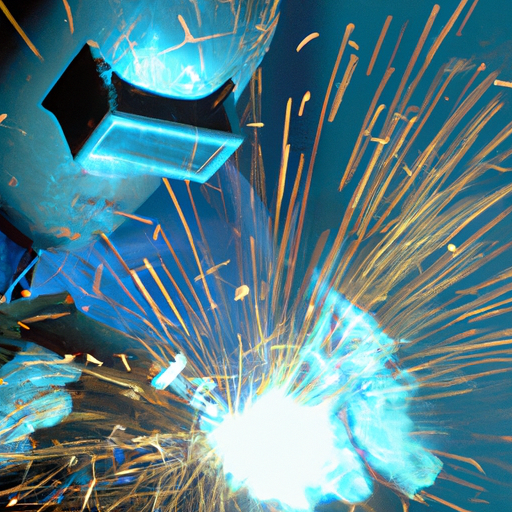
Comparison of 6G Test with Other Welding Tests
6G vs Stick welding test
The 6G pipe welding test and the Stick welding test, also known as Shielded Metal Arc Welding (SMAW) test, differ primarily in terms of the joint configuration being welded. While the 6G test assesses a welder’s ability to perform a full circumference pipe weld in multiple positions, the Stick welding test typically focuses on a vertical or horizontal joint configuration, such as a fillet or groove weld on plates.
The 6G test is considered more challenging due to its inclusion of various positions and the 45-degree incline of the pipe. It demands greater adaptability, skill in electrode manipulation, and ability to weld in confined spaces compared to the Stick welding test.
6G vs MIG welding test
The 6G pipe welding test and the Metal Inert Gas (MIG) welding test differ significantly in terms of welding process, joint configuration, and material type. The 6G test employs the Shielded Metal Arc Welding (SMAW) process, whereas the MIG test utilizes the MIG welding process.
The 6G test evaluates the welder’s ability to weld in various positions on a pipe joint, while the MIG test typically focuses on welding in flat or horizontal positions on plate materials. The 6G test is generally considered more challenging due to the positional complexities, inclination of the pipe, and the need for advanced electrode manipulation skills.
6G vs TIG welding test
The 6G pipe welding test and the Tungsten Inert Gas (TIG) welding test assess different welding techniques and joint configurations. The 6G test utilizes the Shielded Metal Arc Welding (SMAW) process, while the TIG test focuses on the TIG welding process.
The 6G test evaluates a welder’s ability to perform a full circumference weld on a pipe joint in multiple positions, including vertical, horizontal, and overhead. In contrast, the TIG test typically assesses welders’ skills in flat or horizontal positions on plates. The 6G test is considered more challenging due to the inclination of the pipe, positional complexities, and the demand for electrode manipulation skills.
6G vs FCAW welding test
The 6G pipe welding test and the Flux Cored Arc Welding (FCAW) test differ in welding process, joint configuration, and material type. The 6G test utilizes the Shielded Metal Arc Welding (SMAW) process, while the FCAW test focuses on the FCAW process.
The 6G test assesses a welder’s ability to weld a pipe joint in various positions, whereas the FCAW test typically focuses on welding in flat or horizontal positions on plate materials. Although both tests can present challenges, the 6G test is generally considered more difficult due to the positional complexities, inclination of the pipe, and electrode manipulation requirements.
Conclusion: Addressing the Myths and Misconceptions
Debunking common myths about welding tests
Welding tests often come with various myths and misconceptions that can create unnecessary anxiety and confusion among aspiring welders. Let’s debunk some of the common myths:
-
Myth: Welding tests are designed to fail candidates: Welding tests are not intended to fail candidates but rather to assess their skills against industry standards. Tests aim to ensure safety and maintain welding quality by evaluating a welder’s ability to follow procedures and produce sound welds.
-
Myth: Passing a welding test guarantees a job: While successfully passing a welding test can enhance your employability, it does not guarantee a job. Employers consider a range of factors, including experience, certifications, and overall suitability for the position.
-
Myth: Only experienced welders can pass difficult tests: Welding tests are designed for both experienced and aspiring welders. With proper training, practice, and dedication, even novice welders can successfully pass challenging tests.
Understanding the subjectivity of ‘difficulty’ in welding tests
The notion of test difficulty may vary from person to person based on their individual experience, skill level, and familiarity with the test requirements. What may be considered difficult for one welder might be easier for another.
It’s important to remember that the difficulty of a welding test is subjective, and it should not discourage individuals from pursuing their welding aspirations. With adequate training, practice, and determination, anyone can overcome the challenges presented by welding tests.
Reaffirmation on the toughness of 6G welding test
The 6G pipe welding test is undeniably challenging, requiring welders to showcase their skills in various positions, electrode manipulation, and welding on an inclined pipe. However, it’s important to approach the test with confidence, knowing that with proper preparation, practice, and guidance, success is achievable.
The 6G test serves as a benchmark for welders, pushing them to continually improve their skills and expand their knowledge. Overcoming the difficulties presented by the 6G test demonstrates a welder’s dedication and sets them apart as highly skilled professionals in the field of welding.
